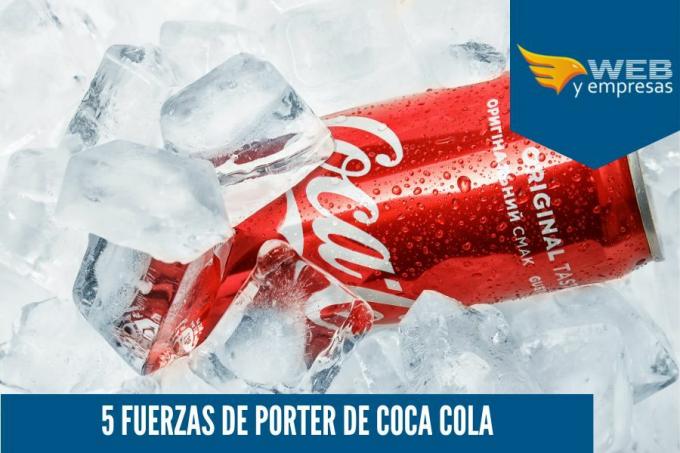Find out how Coca-Cola faces challenges in the global beverage market, from intense rivalry and substitute products, to the bargaining power of suppliers and customers. Delve into Porter's 5 Forces and how the company adapts to these pressures to maintain its leadership and competitive advantage.
Coca Cola It is undoubtedly one of the most iconic and recognized brands in the world. However, that does not mean that it is exempt from facing challenges and competitors. In this article, we invite you to explore the 5 Porter's Forces and how they influence Coca-Cola's competitive position in the global beverage market.

Advertisements
In this article you will find:
1.- Rivalry between existing competitors
when you think about the Coca-Cola competition, probably the first brand that comes to mind is Pepsi. Both companies have fought a decades-long “cola war” for supremacy in the carbonated beverage market. But the rivalry is not just limited to these two companies. You also face local and regional brands that, while not having the same global presence, can represent significant competition in specific markets.
Coca-Cola has used strategies such as product diversification, innovation and advertising to maintain its leadership in the market and differentiate itself from its competitors. Despite this, rivalry in the industry remains intense and a determining factor in the company's profitability.
Advertisements
2.- Threat of substitute products
In recent years, you have witnessed a shift in consumer preferences toward healthier beverages with less sugar. This change has led to an increase in the demand for substitute products such as bottled water, tea, coffee, energy and functional drinks, among others.
Given this scenario, Coca-Cola has expanded its portfolio to include healthier beverages such as Honest Tea, SmartWater and Topo Chico. However, the threat of substitute products remains a constant concern for the company, as consumers continue to search for healthier and more sustainable alternatives.
Advertisements
3.- Bargaining power of suppliers
Coca Cola it relies on a diversified set of suppliers for ingredients such as sugar, sweeteners, fruit concentrates, and packaging. In general, the bargaining power of suppliers is moderate, since the company can negotiate lower prices due to their high volume of purchases and the availability of multiple vendors for each input.
However, Coca-Cola must also deal with factors such as climate change and the volatility of raw material prices., which can affect the stability and availability of your key inputs. Therefore, it is important that you continue to monitor the relationship with your suppliers and diversify your sources of supply to minimize risks.
Advertisements
4.- Bargaining power of customers
The Coca Cola customers they include retailers, distributors and outlets around the world. Although end consumers may have limited bargaining power, large supermarket chains, restaurants, and other distributors have greater bargaining power.
Coca-Cola must maintain strong relationships with these business partners and offer incentives, such as promotions and discounts, to ensure their loyalty and maintain their position on the shelves of the points of sale. sale. At the same time, the company must also pay attention to the opinions and preferences of end consumers in order to adapt its product offering and remain attractive in the market.
Advertisements
5.- Threat of new competitors
The beverage market is a highly competitive, and there is always the possibility of new competitors trying to enter. However, the barrier to entry is high due to the strong presence of established brands such as Coca-Cola and Pepsi, which have a wide distribution network and a high level of brand recognition and loyalty.
Despite these barriers, Coca-Cola cannot ignore the possibility that startups or brands Locals can capture market share with innovative products or marketing strategies new. Therefore, the company must continue to invest in research and development, as well as in the expansion of its portfolio to maintain its competitive advantage.
Conclusion
Coca-Cola faces numerous challenges in the global beverage market, including intense rivalry among competitors, the threat of substitute products, the bargaining power of suppliers and customers, and the possibility of new competitors. To maintain its leadership in the market, the company must continue to adapt to changing consumer preferences, diversify its offer products, maintain strong relationships with business partners and suppliers, and be alert to innovations and changes in the environment competitive.
He analysis of Porter's 5 Forces provides you with a comprehensive view of the challenges Coca Cola you face in your competitive environment. By being aware of these forces, you will be able to better understand how the company must adapt and evolve to stay on top of the global beverage market.


